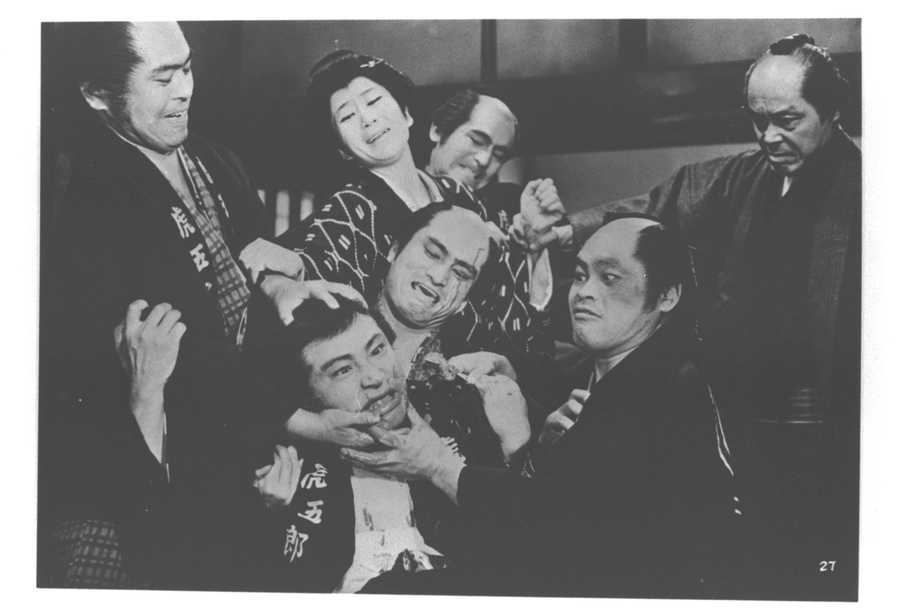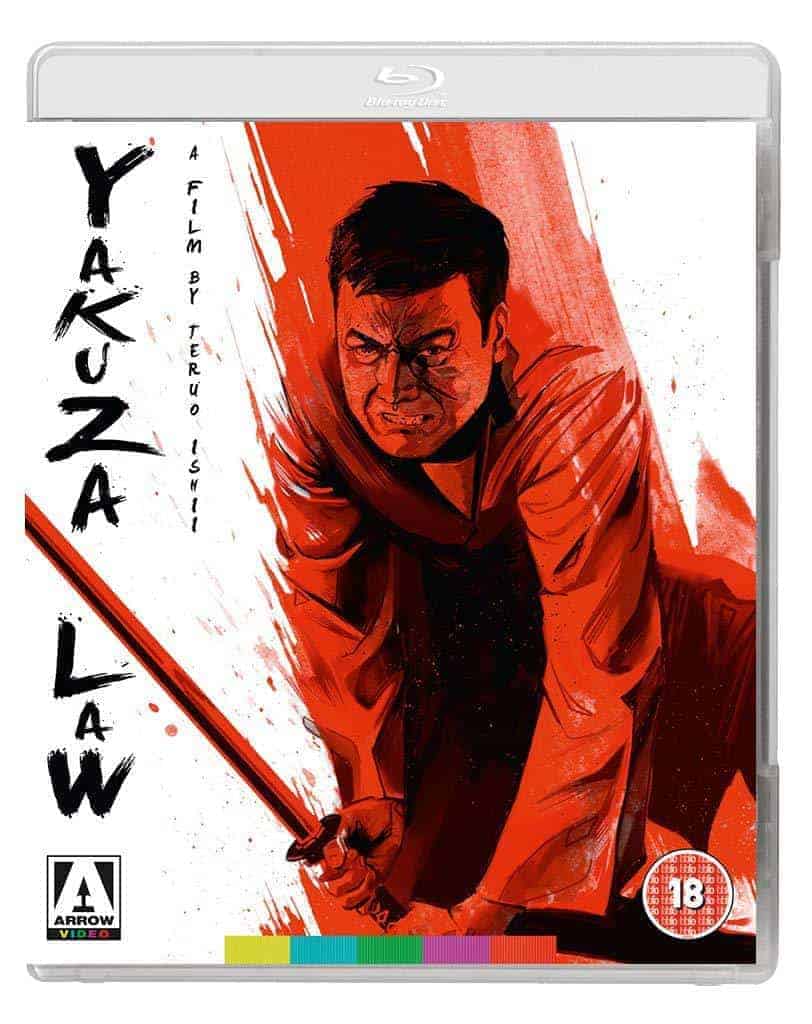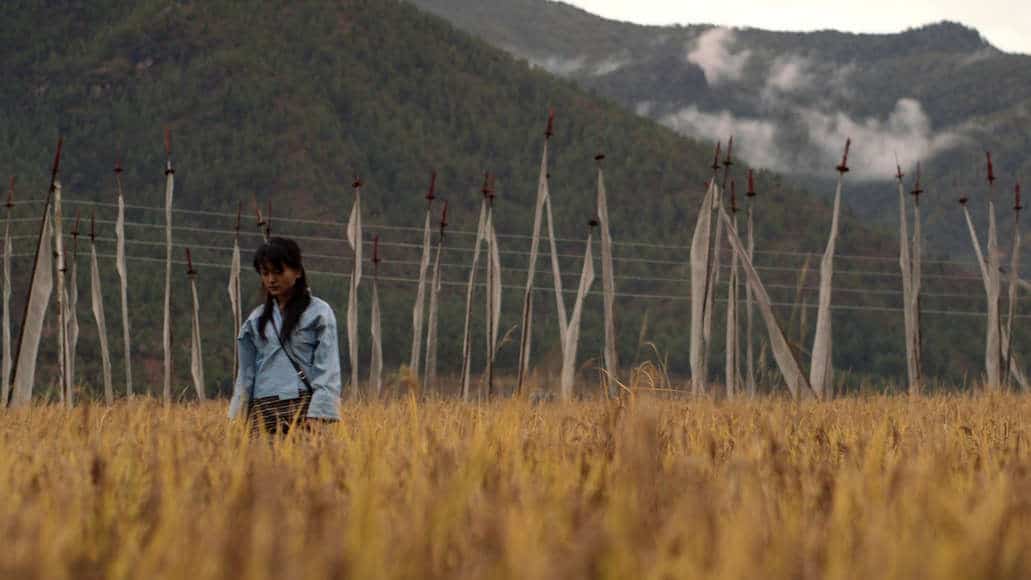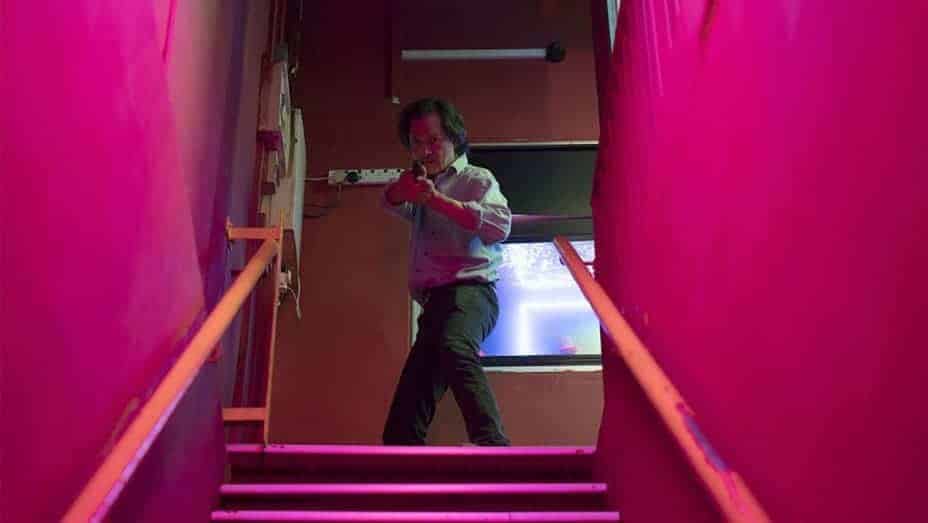There are two genres that Teruo Ishii definitely knows well: Yakuza and exploitation. Evidently, combining the two into one film (even if it is an omnibus) was definitely a good idea, particularly because Toei's backing guaranteed the quality of the production values and a rather famous cast. Let us take a look at the result, though.
Buy This Title
The script deals with three stories revolving around Yakuza and its rules, but in essence with the punishment received by those who break them. The first one takes place during the Edo period, and tells the story of a gang whose members end up having an area under their complete control, when they win against an opposing gang. Their cruel, sadistic and completely mistrustful boss shares a number of responsibilities to his men, but soon decides that everyone is against him, and sends his younger men to kill those who actually won the area for him just a little time before. In the center of all these events is Tomoso, who finds himself as the main recipient of his boss's wrath, after he breaks two rules of the Yakuza (at least in the boss's mind), “do not steal” and “do not sleep with married women”.
The second segment takes place in the Meiji Period, when Ogata, who has just been released from prison, decides to attack the opposing gang's boss, eventually bringing his severed arm in front of his own leader. Unfortunately, his actions bring an unwanted clash between the two gangs, and immediately he finds himself expelled from the area, with enemies from both syndicates at his heels. When he returns for his girlfriend, he ends up breaking two rules, the first one being “do not bring trouble to the boss” and the second, “do not return after being expelled”.
The third and lengthier one takes place in the Showa era, where swords have been replaced by guns, but the harshness of the yakuza rules remains, with the broken one this time being “do not leak secrets”. A theft from the Hashiba family initiates a number of killings of yakuza henchmen all over, while two men, extremely proficient in the use of guns, take center stage.
The exploitation element makes its appearance from the film's intro, which unfolds like a grotesque music video, comprised of images of men being tortured in quite graphic fashion. Teruo Ishii tones down the aesthetics in the beginning of the story, but not for long, since the initial battle and the first council scene end up in bloodshed.
The violent images, and particularly the ones dealing with torture remain a central factor of the film for all three segments, as we watch men tortured with electric drills, having their faces burned with lighters and whole lot of maiming. The second segment is the only one that tones down on the torture, but not on the violence, as the bloody battles are almost constant.
In that fashion, Teruo Ishii directs an omnibus focused on bloody action and torture, with the story mostly being just an excuse to present these two factors, in genuine exploitation (occasionally bordering on splatter) style. This however, does not mean that the film is completely stripped of depth. The Yakuza rules and the relations of the gang members provide a sincere background, while Ishii also seems to explore the role of women in such a male-dominated world, and in contrast to the “norms” of the genre, the recipients of violence are almost exclusively men.
Furthermore, the presence of protagonists like Bunta Sugawara, Renji Ishibashi, Minoru Oki and Teruo Yoshida brings a quality to the acting very rarely witnessed in the exploitation genre, with the first part being the highlight of this trait.
The film unfolds in a frantic pace, with the succession of scenes being non-stop, in a tactic that definitely benefits the narrative, as it allows the story to unfold as a music video, at least in terms of speed. Osamu Furuya's cinematography presents images that definitely do now shy away from the violence, while the sudden zoom-ins on the faces of the characters inject the movie with a definite cult essence.
Not much more to say, fans of exploitation and Yakuza movies of the 60's and 70's will have a blast with this, while the cast makes “Yakuza Law” a stand out among the plethora of similar titles.
















